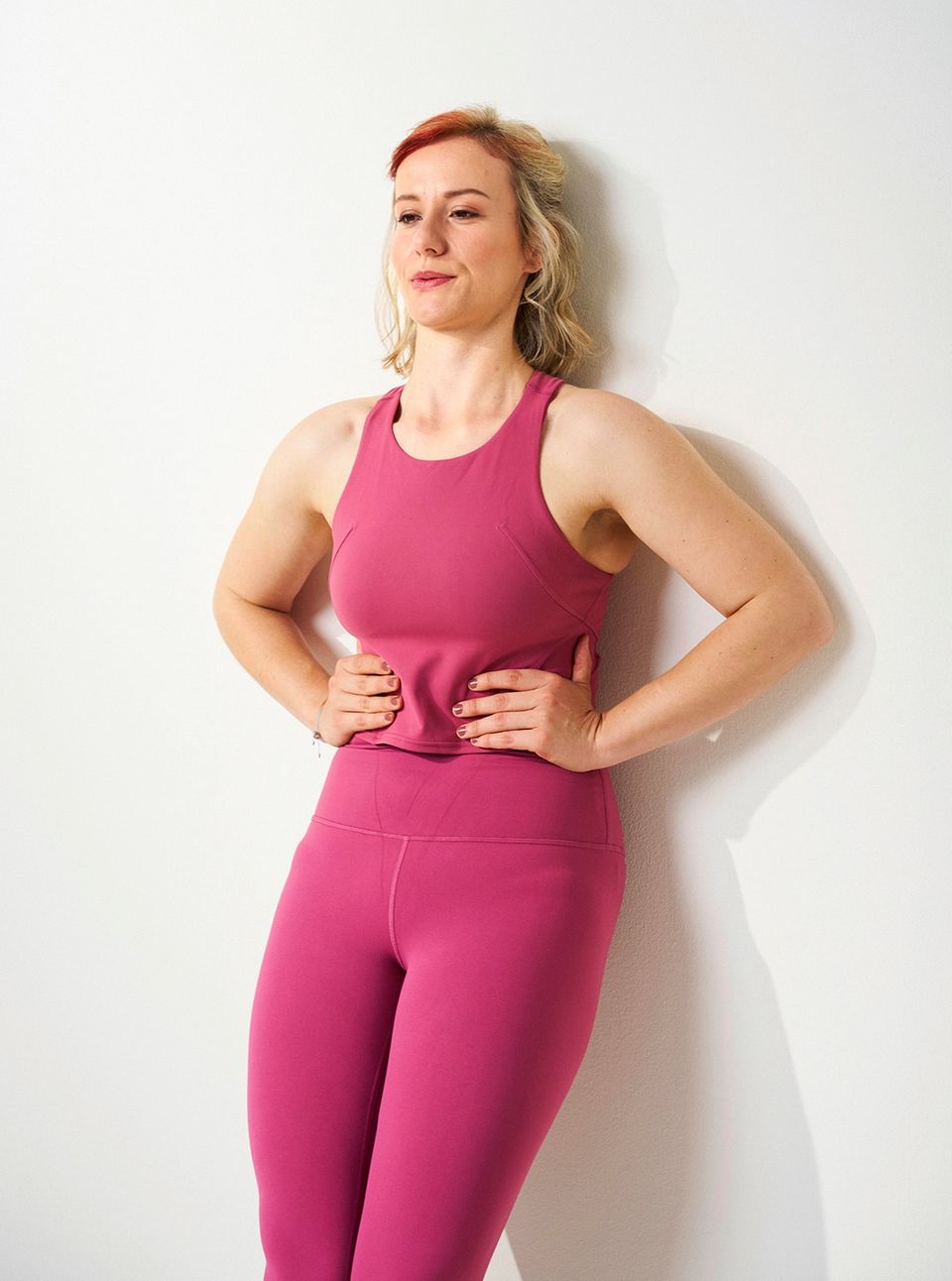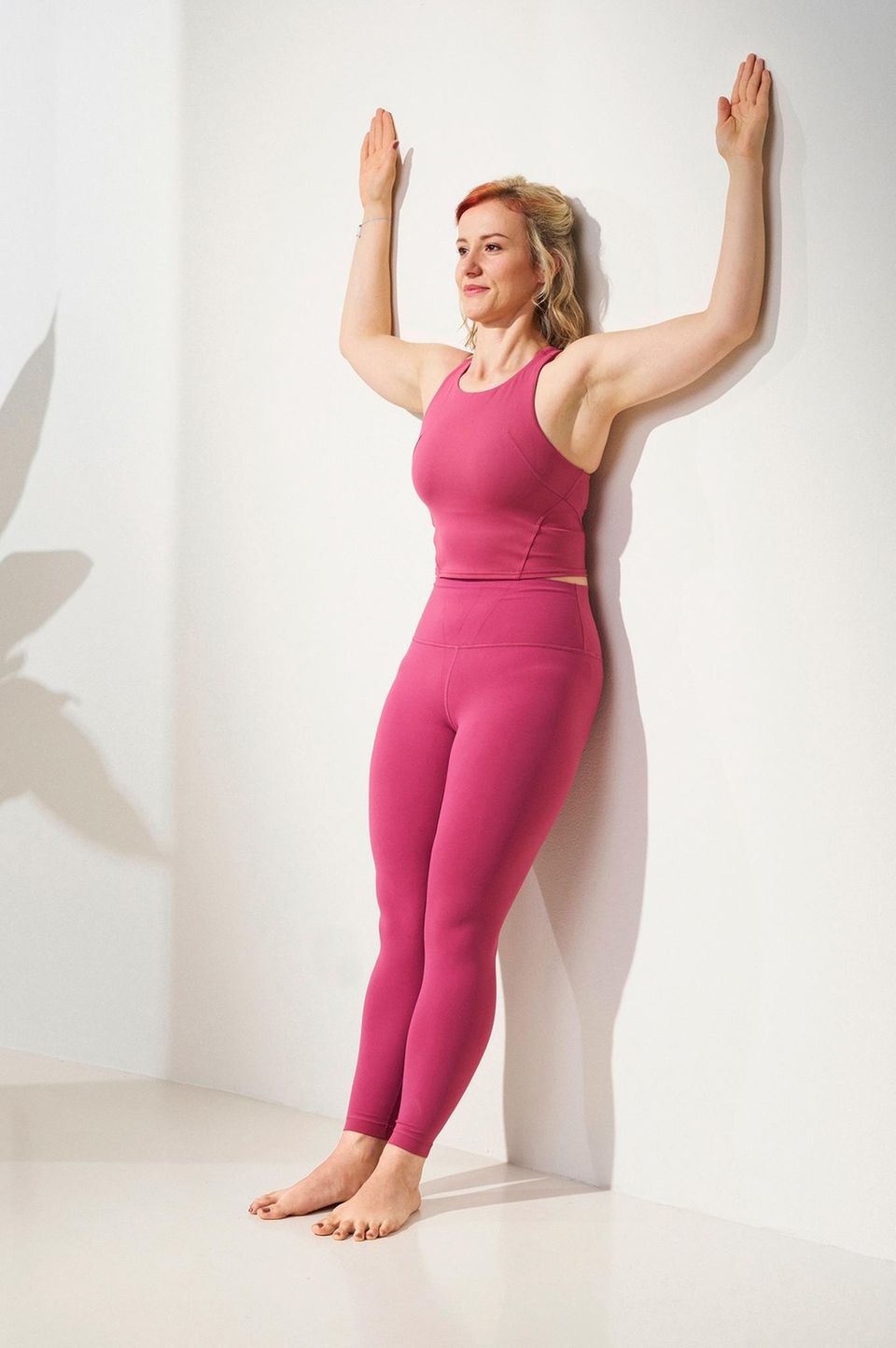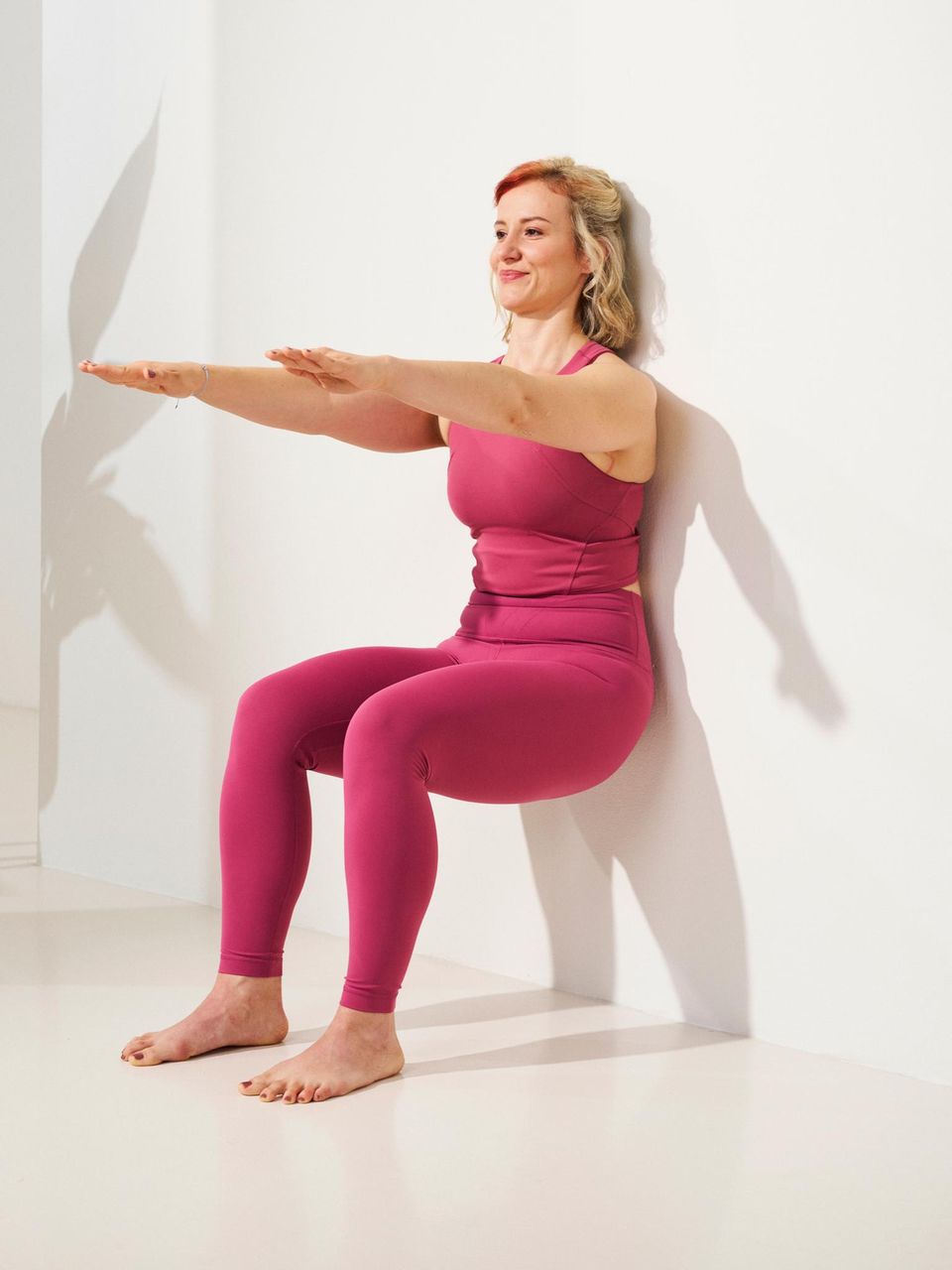Wall Pilates: What are the benefits of muscle exercises on the wall?

by Daniela Stohn
4 mins"Off to the wall" That's where many people are currently training their muscles – which is why the viral fitness trend, not surprisingly, is also called wall Pilates.
It certainly looks strenuous: raising and lowering your pelvis with your feet against the wall, doing push-ups or handstands against the wall, or in a plank position with your feet against the wall, alternately pulling your knees forward. Social media is teeming with 28-day challenges and exercises under the hashtag "Wall Pilates," and celebrities from Beyoncé to Jennifer Aniston to Nina Bott are doing it. What's the viral hype all about? And why is it worth giving it a try?
"Similar to the reformer or the Pilates chair, the wall is a training device that can be used for strengthening and stretching – and it's been around for a very long time," explains Pilates instructor Natalia Cichos-Terrero, who wrote a book about the trend. "What's new is that wall Pilates exercises are being featured very frequently on TikTok, YouTube, and Instagram, making them very easy for everyone to do at home – free of charge and without any equipment or studio."
The advantage of this approach: "You immediately notice the imbalances and asymmetries in the body – that's why the wall is a great training tool and also suitable for beginners. And you can perform the exercises very specifically, safely, and precisely." The disadvantage: Many workouts circulate on social media under the label of Wall Pilates that have nothing to do with the original method. "Not every exercise on the wall is Pilates just because it says so."
But let’s start from the beginning: What exactly is Pilates?By no means a new trend—this whole-body workout was developed by Joseph Pilates more than 100 years ago. Because the exercises are performed precisely and with control from the core, they also effectively train the deep postural muscles and promote stability. "But Pilates is much more than just a physical workout," says Cichos-Terrero: "The connection between body and mind helps you listen better to your own needs, live life more mindfully, and be in the here and now."
How do I find out if an offer is serious?Pilates isn't a protected term, so not everything offered under the label reflects the inventor's original idea. "In good Pilates classes, the exercises are precisely instructed," says expert Cichos-Terrero. "In wall Pilates, for example, it's important to explain how to align yourself correctly on the equipment: How should the spine be positioned, what about the pelvis, the feet? How far should I stand from the wall? That varies greatly from person to person." Also important: activating the powerhouse, meaning performing each exercise from a strong core, from the middle up and from the middle down. Natalia Cichos-Terrero recommends practicing the basics with a trainer at the beginning – and checking their qualifications beforehand.

Get fit today so you can enjoy tomorrow! BRIGITTE Forever Fit is the fitness class for women over 50. Start now and lay the foundation for a healthy, active life full of energy and vitality!
Just like Pilates on the mat, it improves body awareness and control, posture, balance, mobility, and strength, especially in the core, meaning the abdominal, pelvic floor, hip, and back muscles. "But you shouldn't focus solely on a single tool," says trainer Cichos-Terrero, advising to return to mat training again and again "to see what your body is capable of, even without tools." What neither wall exercises nor Pilates on the mat can do: train the cardiovascular system. Running, swimming, and cycling are better for that.
And who is wall Pilates suitable for?Basically, it's for everyone, especially beginners, because it helps align the spine better and keep the pelvis and hips stable. The wall always provides honest feedback, so cheating isn't an option. It's also great for people who travel a lot; there are walls pretty much everywhere—in hotels, at airports... It's also a good option for pregnant women who are experienced with Pilates, and for people with balance problems.
How to: Wall Pilates 1. PowerhouseStand with your back against a wall, feet one to two feet away from the wall, heels touching, toes pointing slightly outward (Pilates V). Knees soft, neck long. Hands on your chest. Now inhale through your nose into the sides and back of your chest and exhale through your slightly open mouth. As you exhale, draw your ribs together and down towards your hip bones. Activate your pelvic floor, and with the next exhalation, draw your navel in and up towards your spine. Pull your hip bones towards each other, activating your inner thighs. Repeat 2 to 4 times.
2. Arm SlidesYour back should be against the wall, feet in a Pilates V, one to two feet away from the wall. Your head should lean against the wall, if possible, with your chin tilted slightly downward. Your upper arms should be parallel to the floor, your forearms vertical. Your shoulders, elbows, and the backs of your hands should touch the wall, and your ribs should be pulled toward each other. Now stretch your arms upward and return to the starting position. This engages your hamstrings and buttocks. Repeat 4 to 6 times.
3. Wall SquatYour back is against the wall, feet hip-width apart, slightly away from the wall. Arms and palms are against the wall. Inhale, raise your arms until they are parallel to the floor, and simultaneously slide your body down along the wall until your knees are bent at 90 degrees. Your knees should not extend beyond your feet. Exhale, slide your body back up the wall and simultaneously lower your arms. Repeat 3 to 4 times.
4. Push-upsStand facing a wall, at least two feet apart, with your arms extended toward the wall. Legs together, feet in a Pilates V, arms raised forward to shoulder height, and hands placed on the wall. Powerhouse is engaged. Now, as you inhale, bend your arms and exhale, stretch them. Keep your elbows close to your body and pull them toward your lower ribs. Your body should be straight as a board. For an advanced variation, perform the exercise on your tiptoes. Repeat 4 to 6 times.
Brigitte
brigitte







